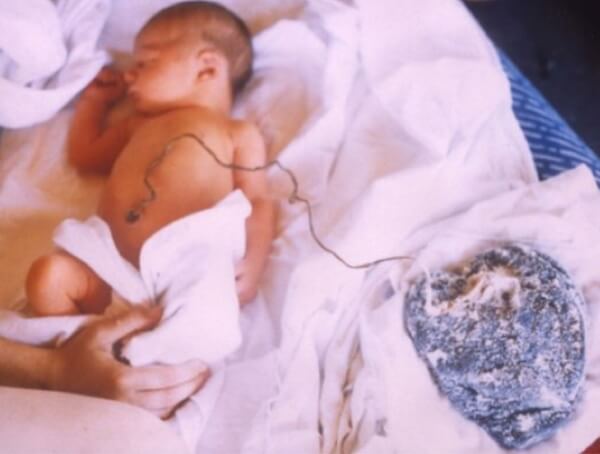What Is A Lotus Birth?

Lotus Birth is the practice of leaving the umbilical cord uncut, so the baby remains attached to the placenta until the cord naturally separates from the navel – just as a cut cord does. The cord naturally separates around three to ten days after birth.
You might be wondering, “why would you have a lotus birth?”, given the umbilical cord is separated from the baby either way.
Firstly, it’s important to understand a few things.
As you probably already know, the ova plus the sperm equal the baby. But that’s not all. The ova and sperm also make the:
- Placenta
- Umbilical cord
- Amniotic fluid
- Membranes
These are all developed from the same genetic material.
While the baby is in utero, the blood supply to the lungs, liver and gut is diverted or reduced. The functions of these organs are performed by the placenta.
With the baby’s first breath, the diverting blood vessels close, causing the organs to become fully perfused with blood for the first time.
The umbilical cord comprises three blood vessels – two umbilical arteries that carry deoxygenated blood to the placenta and a single umbilical vein that returns oxygen-rich blood to the baby’s body.
Lotus Birth recognises and respects the integrity of the whole biological system – for both mother and baby.

Who Normally Cuts The Cord?
When it comes time to cut the baby’s cord, here are some figures as to who is usually the initiator of cutting the cord.
Doctor: 68%
Midwife: 22%
Father: 7%
Mother: 3%
Healing Time Of Baby’s Navel
The healing time of a baby’s navel can depend on the way the cord has been separated from the baby.
When cut immediately the healing time is approximately 9.56 days.
When the baby’s cord is left to stop pulsating before being cut, the healing time is approximately 7.16 days.
However, when the cord separates after this time, the healing time is approximately 3.75 days.





